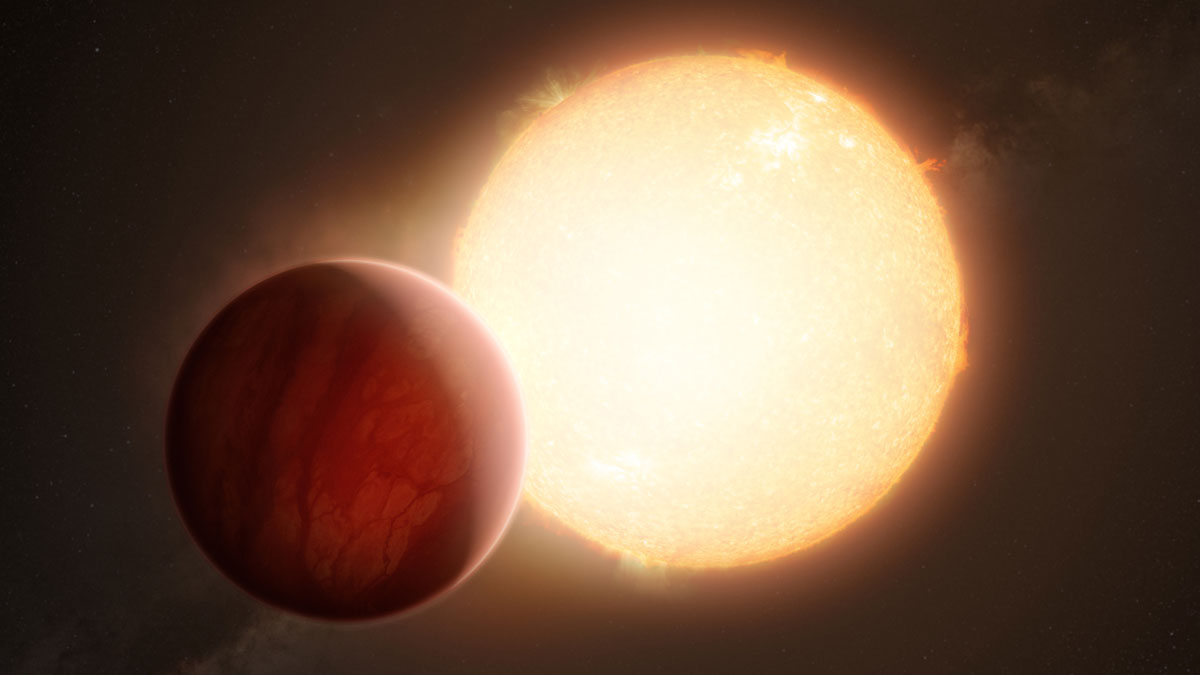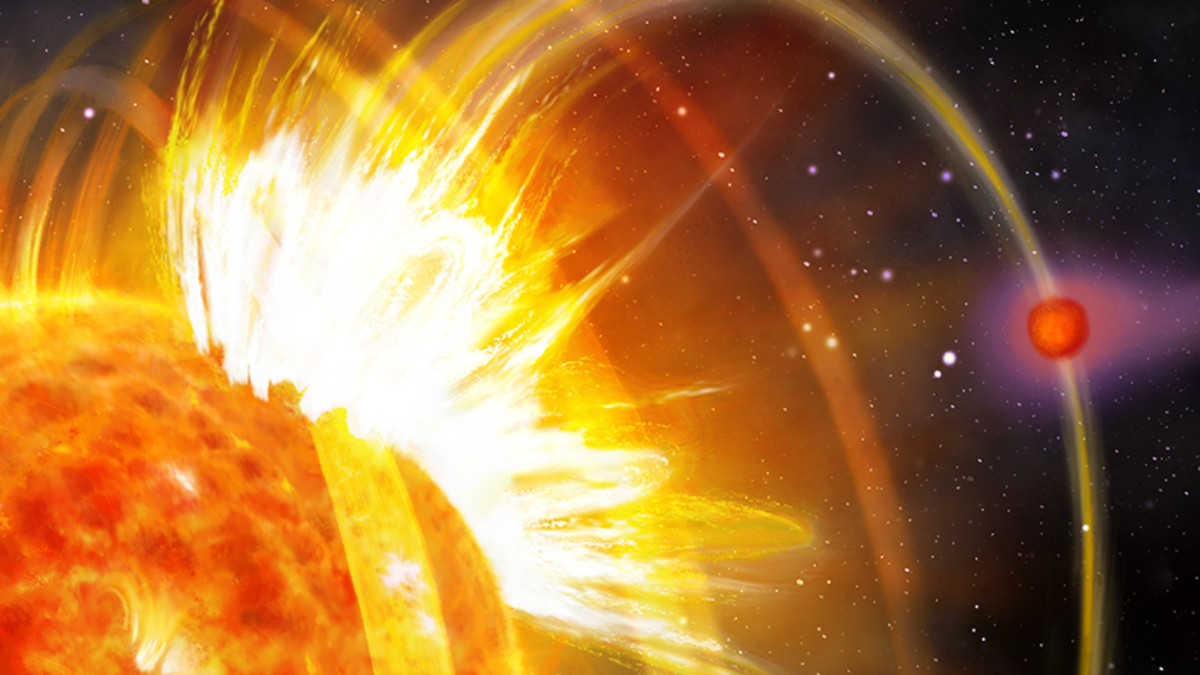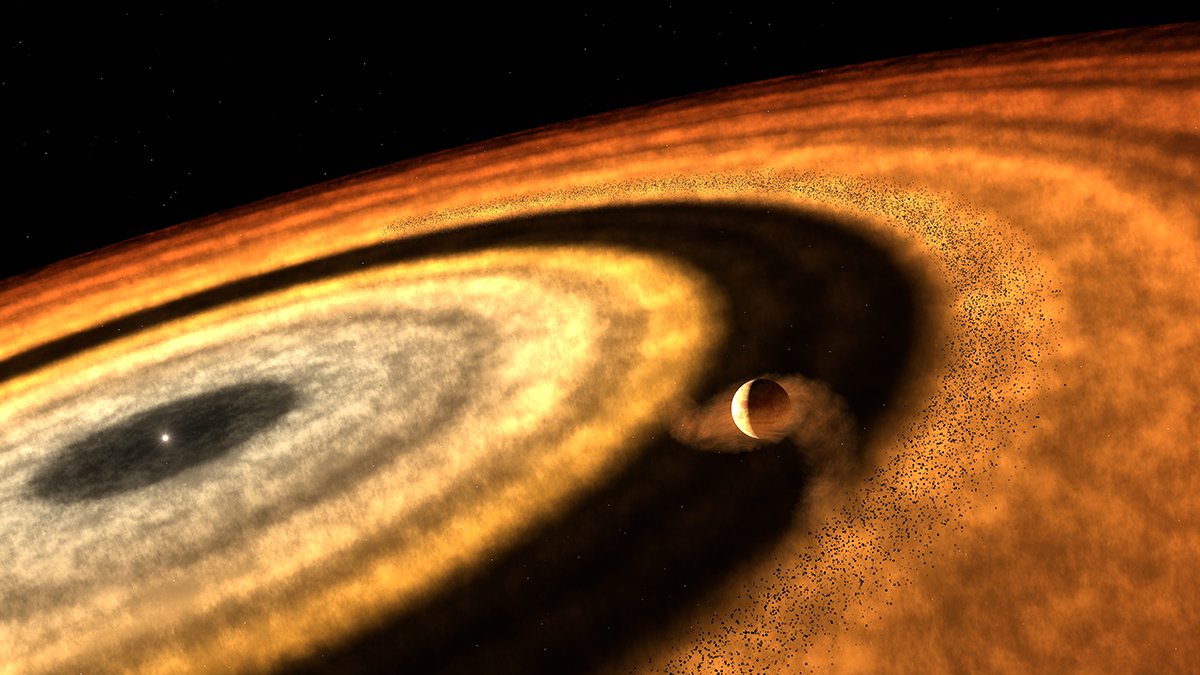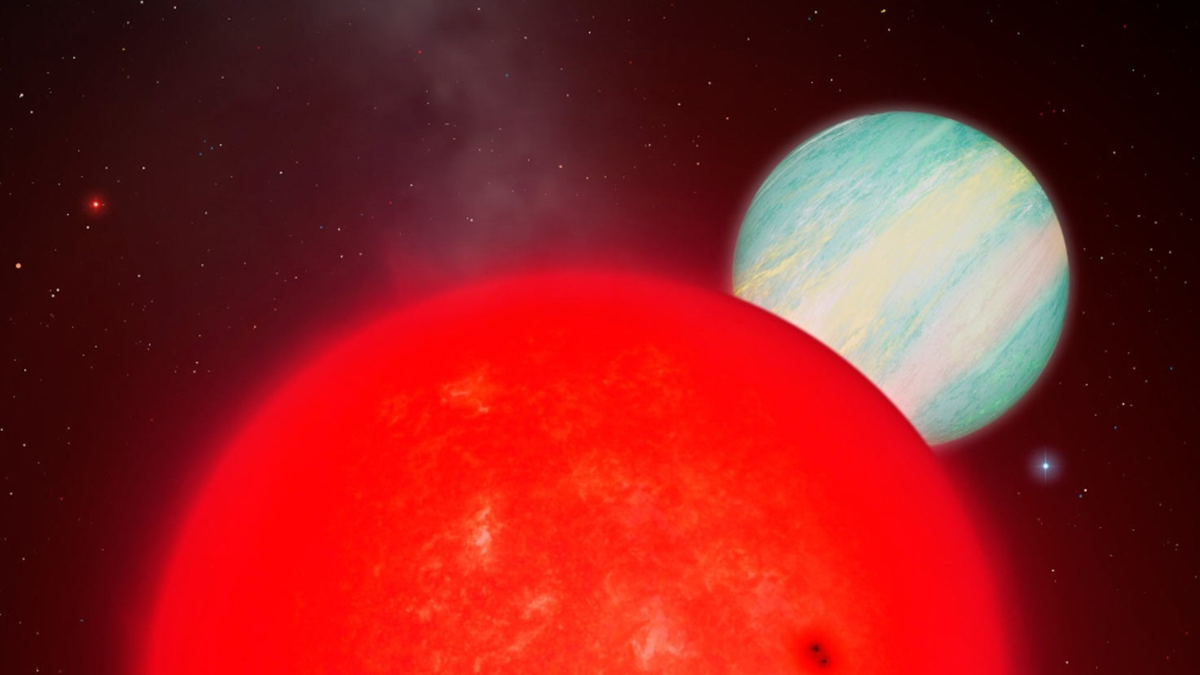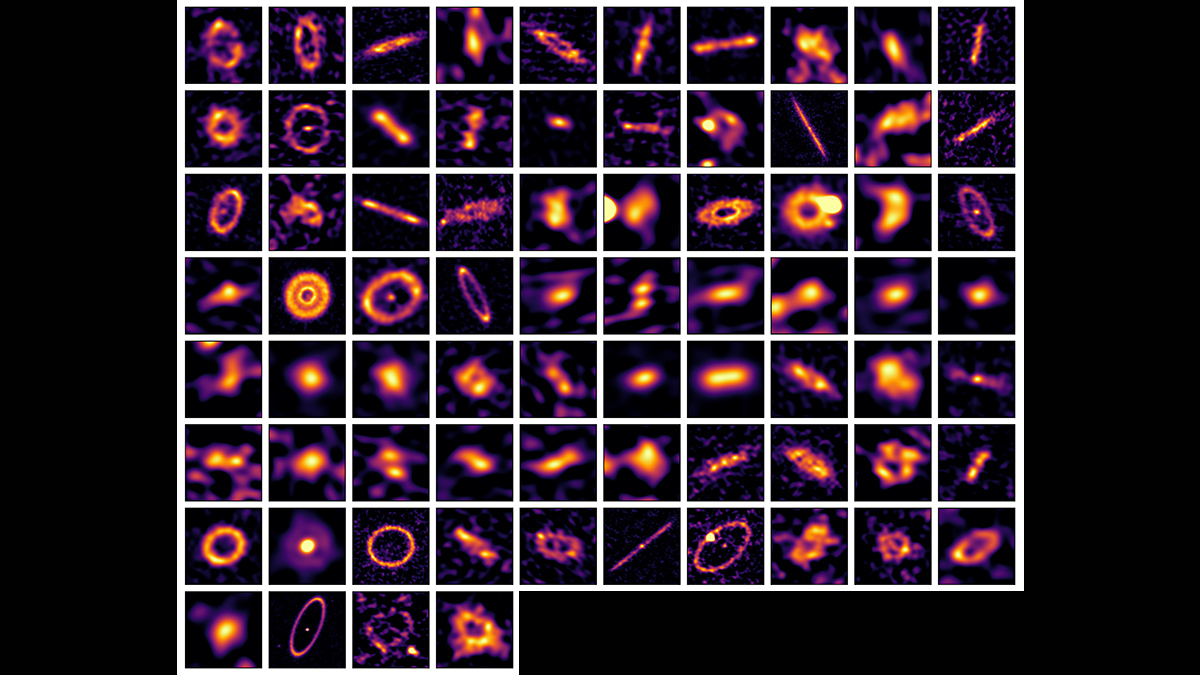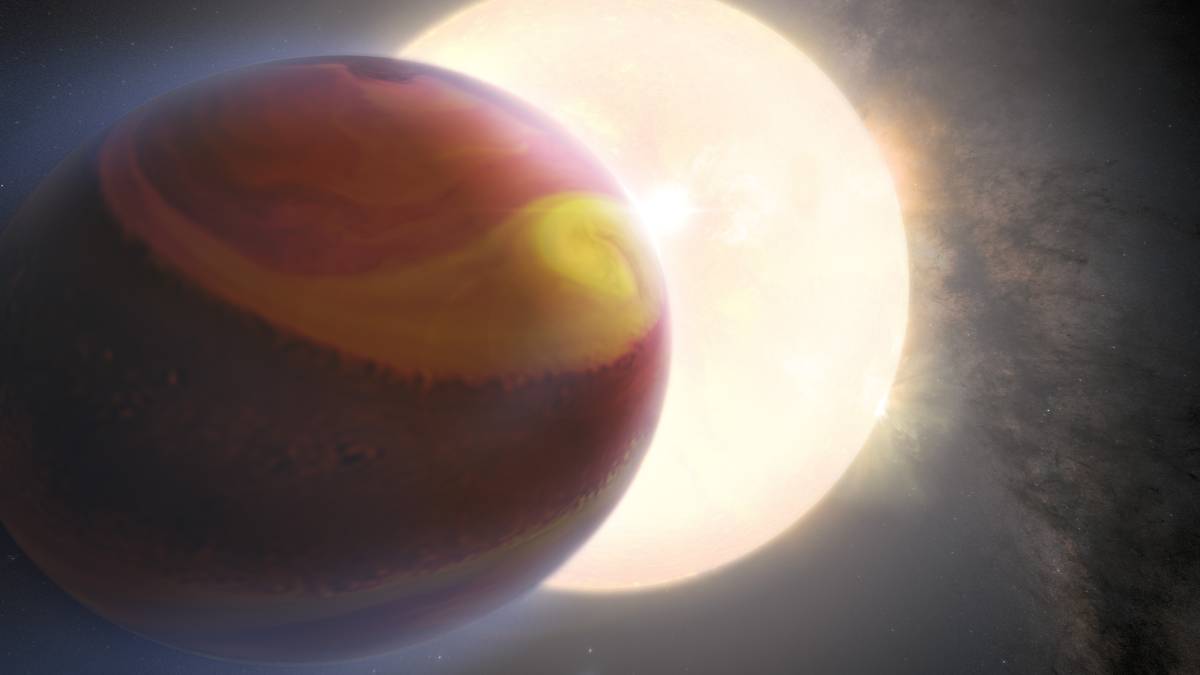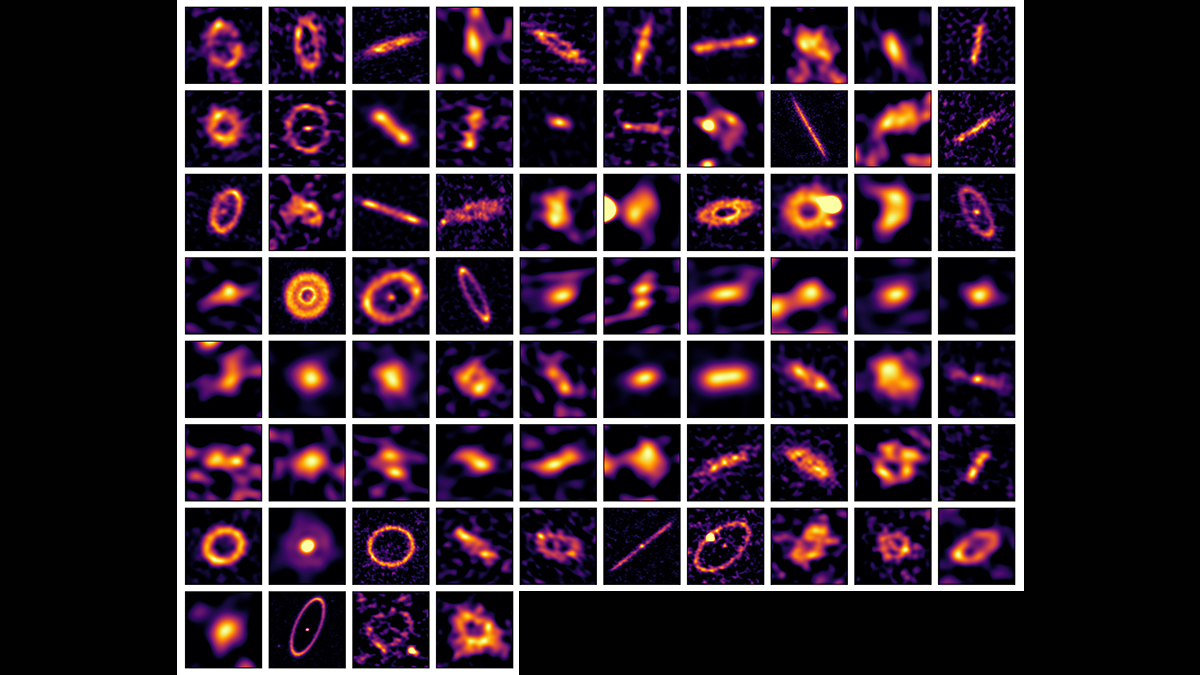A sampling of aging Sun-like stars demonstrates that they likely eat their closest planets.
exoplanets
Tilted Planet System? Maybe It Was Born That Way
New observations could shed light on the degree to which misalignment in a planet-forming disk contributes to skewed planetary orbits.
Exoplanet Triggers Stellar Flares and Hastens Its Demise
HIP 67522 b can’t stop blasting itself in the face with stellar flares, a type of magnetic interaction that scientists have spent decades looking for.
This Exoplanet May Have Grown Stranger as It Journeyed Starward
WASP-121b, an already unusual planet, might have a remote origin that explains some of its peculiar properties—from iron rain to the unexpected presence of methane.
A New Exoplanet Resets the Scale
TOI-6894 b, the largest exoplanet relative to its host star yet seen, doesn’t fit the most widely accepted formation model for giant worlds.
Cinturones polvorientos ofrecen una visión más clara de la formación de exoplanetas
Las observaciones en longitudes de onda milimétricas de polvo y guijarros en 74 sistemas estelares sugieren que las migraciones planetarias podrían ser más comunes de lo que pensábamos.
First 3D Map of Exoplanet Weather Reveals Superfast Jet
New observations also answer a long-standing question about where this ultrahot planet keeps its titanium.
A Super Speedy Star May Be Streaking Through Our Galaxy
Astronomers suggest the star is towing along an exoplanet. The system could be traveling fast enough to escape the Milky Way.
Dusty Belts Provide Clearer Insights into Exoplanet Formation
Millimeter-wavelength observations of dust and pebbles in 74 star systems hint that planetary migrations might be more common than we realized.
Scientists Finally Get a Good Look at a Disintegrating Exoplanet
The James Webb Space Telescope offers astronomers a rare glimpse into the chemical composition of a rocky planet’s interior—and the results are “very surprising.”

